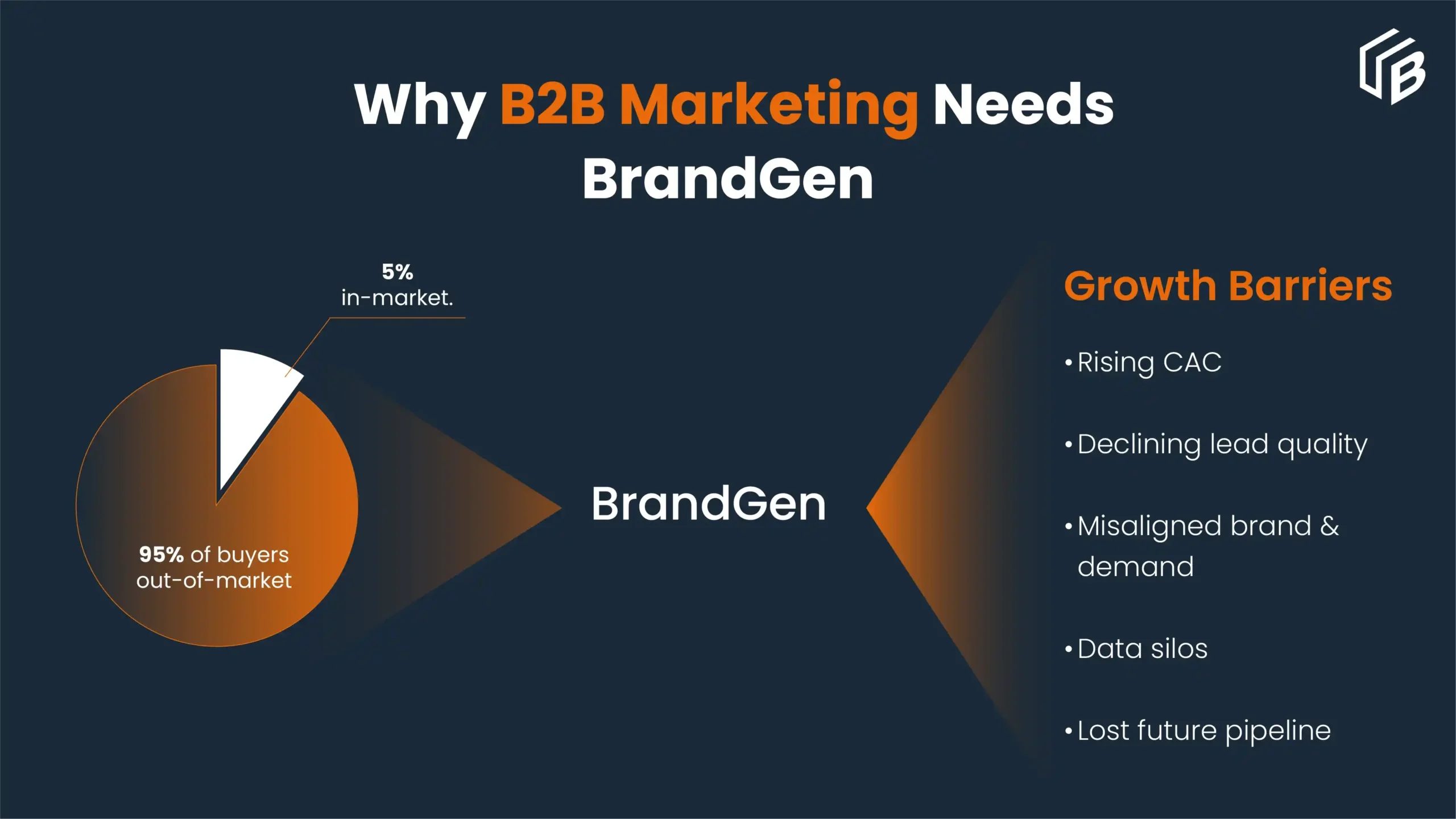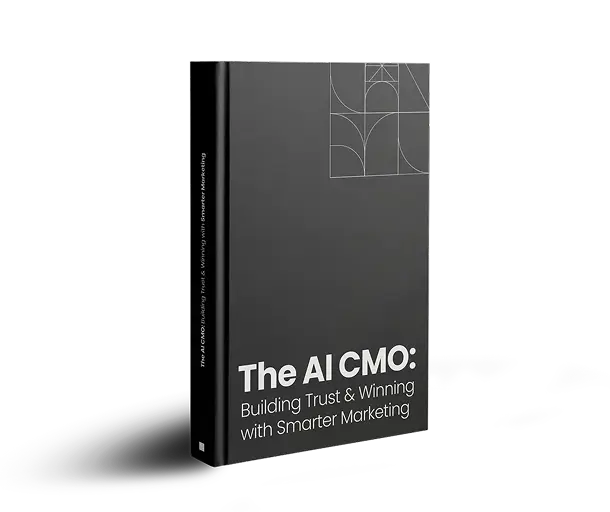
BrandGen in B2B Marketing: The CMO’s Framework for Sustainable Growth
In this article
Introduction
BrandGen Beyond Buzzwords and Silos
- B2B marketing budgets tend to favor short-term gains, not sustainable growth over time.
- Customer acquisition costs are rising in most sectors because many B2B performance marketing tactics target a small number of active buyers.
- Competitors that have strong brands enjoy a clear point of entry when buyers recognize them more readily.
- If prospects don’t know or trust the brand, then demand generation programs may struggle.
BrandGen. What a Concept!

BrandGen FAQ
- Unbound builds positioning, creative, and campaigns with commercial intent baked in from the start.
- We architect programs to work across earned, owned, and paid channels/PR, not just big-budget media plans.
- We connect brand to business impact through attribution, conversion metrics, and pipeline acceleration.
- And we operate like a GTM partner, not just a creative vendor.
How to Put Your BrandGen to Work in B2B Marketing
- Align Teams and Goals: Create a shared language, goals, objectives, and expectations so brand and demand creation teams are heading in the same direction. Brand teams should be involved in business priorities and sales objectives.
- Integrate Planning and Budgeting: Ideally, have one media budget for both brand and demand generation. Allocate funds strategically across the full funnel from top to bottom. My own experience suggests allocating 15-20% of your whole demand creation budget to brand efforts as a starting point, though this varies by organization and industry. It is irresponsible to focus on demand generation with poor market awareness.
- Align Creative Platform and Messaging: Build creative platforms and messaging that can transcend the entire light and dark funnel, ensuring consistency from top-of-funnel brand efforts to demand generation programs. Use a storytelling approach with a mix of emotional and rational content, as emotion is effective across the B2B buyer journey. Define a compelling, core narrative and map your messaging narratives to funnel stages.
- Define the Buyer Journey and Campaign Infrastructure: Clearly define the journey from awareness to conversion (top to bottom funnel). Decide how to reach the audience and what assets are effective at each stage. For example, thought leadership and case studies at the top, premium assets and webinars in the middle, product trials at the bottom. Be sure your campaign programs and tactics map to the buyer journey. It’s important to tune your content marketing funnel to the dynamics of your business and your markets.
- Rethink Measurement and KPIs: Move beyond traditional brand metrics (impressions, engagement, share of voice) and demand metrics (MQLs, SQLs). Instead, focus on showing the correlation between brand campaign impact and the conversion performance of demand activities. Measure things like the percentage of demand creation contributing to source pipeline and whether this improves post BrandGen implementation. Socialize strategy and impact consistently, focusing on metrics that leadership cares about, like sales impact and pipeline contribution.
- Continuous Optimization: BrandGen cannot be static. It requires ongoing optimization and active management to drive and sustain results. Regularly analyze engagement data to adapt your approach.
No BS. Just BrandGen.
What’s Holding Your Team Back from Engaging the Right Leads?
Be a part of 1000+ successful clients that have chosen UnboundB2B for growth.
Discover more resources

Successful B2B Lead Generation requires generating Marketing Qualified Leads. In this article, we have discussed how to identify MQLs and 10 practical tips to generate more MQLs. These tips cover essential strategies from optimizing your sales funnel to leveraging engaging videos and interactive content. You'll learn about the importance of strong calls-to-action, utilizing chatbots, and implementing Account-Based Marketing. We'll explore how a Customer Data Platform can improve your targeting and lead-generation efforts. By implementing these strategies, you can significantly improve your MQL generation and boost your B2B growth.

Demand for SaaS products and services has increased significantly in recent years. By making cloud-based software solutions more accessible, SaaS companies bring technology closer to modern businesses. The increased demand has resulted in a highly competitive SaaS environment. One effective strategy companies can use to stay ahead of the competition is SaaS advertising. Read on to discover how ad platforms facilitate SaaS advertising and find out which advertising platforms your company can leverage to succeed in sales.







